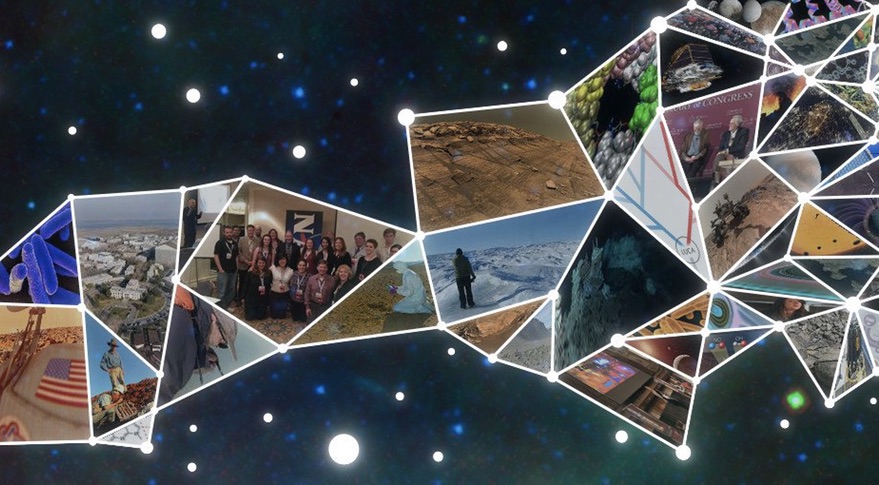
WASHINGTON — NASA is planning to replace its two-decade-old virtual institute devoted to astrobiology with a looser network of research teams, a move the agency said reflects the maturity of the field but which has some scientists concerned.
In a Nov. 1 statement, NASA said that it will replace the NASA Astrobiology Institute (NAI) with a set of “research coordination networks,” or RCNs, that will bring together scientists for interdisciplinary research in astrobiology. NASA plans to have five such RCNs in place by the end of 2019.
In the statement, agency officials argued that the RCN approach offered more flexibility for supporting research in specific areas of astrobiology without the overhead of the existing institute. The RCN model has been used in National Science Foundation programs and also at NASA for the Nexus for Exoplanet System Science, or NExSS, an RCN that supports research in exoplanet science.
“The NAI has been incredibly successful at fulfilling its original mandate of creating and building an interdisciplinary community of astrobiologists from the ground up,” said Lori Glaze, the acting director of NASA’s planetary science division, in the statement. “The new structure of the Astrobiology Program will build on this success and empower the science community to enter a new era of discovery.”
However, many scientists aren’t sure what the end of the current institute and the formation of the RCNs will mean for their research. “In the astrobiology field, there’s uncertainty about how these new networks will work in practice,” said William McKinnon, co-chair of the Committee on Astrobiology and Planetary Science (CAPS), during a Nov. 7 presentation at a meeting of the National Academies’ Space Studies Board.
The five planned RCNs include the existing NExSS as well as four to be established by the end of 2019 on life detection, ocean worlds, prebiotic chemistry on the early Earth and early cellular life. “When we asked some questions specifically about where the search for life or even evidence of past life on Mars fits in in any of the five RCNs, the answer was it doesn’t,” McKinnon said. “That causes a bit of head-scratching. You wonder whether people might intuit that Mars astrobiology isn’t ranked as high.”
Michael New, NASA deputy associate administrator for research in the Science Mission Directorate, countered at the meeting that the search for life on Mars would fit into the life detection RCN. The shift to RCNs, he said, reflects the overall maturity of the field.
“The NAI was founded 20 years ago when there really wasn’t a field of astrobiology,” he said. “To create a field of astrobiology, NASA created the NAI as a single focus point to create a community.”
Today, he said the “heavy overhead burden” of the institute is no longer needed given the growth of the field. The institute, run out of the Ames Research Center in California, has three full-time civil service employees. “RCNs are more flexible in the sense that we separate funding research from coordinating that research.”
The shift from the institute to the RCN model has left some scientists worried about how research will be funded. NASA says that it will fund astrobiology research at the same level through its overarching Research Opportunities in Space and Earth Science (ROSES) grant program.
“The RCNs are a means to better coordinate our researchers, but they do not alter the way NASA funds astrobiology research,” said Mary Voytek, senior scientist for NASA’s Astrobiology Program, in the statement. “Astrobiology proposals will be reviewed and selected for funding through the usual competitive grants-selection process, described in ROSES.”
Other scientists said that the shift from the institute to the research networks wasn’t communicated well. “There was no socializing of this new concept beforehand with the community,” said Rosaly Lopes of the Jet Propulsion Laboratory at the meeting, a member of the Space Studies Board. “That’s what caused a lot of angst and confusion. There are a lot of people who still don’t know how it’s going to work.”
Some NASA officials, though, had been discussing a shift to the RCN model for some time. Speaking at the American Astronomical Society’s Division for Planetary Sciences annual meeting Oct. 22, Glaze discussed the potential use of RCNs in astrobiology.
“One of the things that I’ve been doing since I got to Headquarters was looking at both the NAI model and the NExSS model for trying to move forward with astrobiology research,” she said during an “agency night” session of the conference. “We’re in the process of looking at what the astrobiology program is going to look like in the future, and we’re hoping to be able to move forward with that some time very soon.”
New noted at the Space Studies Board meeting that those studies had been briefed to various committees for months, but acknowledged problems with the announcement of the decision to end the institute. “Yes, the rollout to the community was bungled,” he said. He added, though, that “it was discussed with CAPS and the [Planetary Science Advisory Committee] several, several times.”
“I’ll just say,” McKinnon said, “that since it is a change, a change creates uncertainty, and that’s what you have to deal with.”
Read Again NASA to shut down astrobiology virtual institute : https://ift.tt/2QBmkzfBagikan Berita Ini
















0 Response to "NASA to shut down astrobiology virtual institute"
Post a Comment